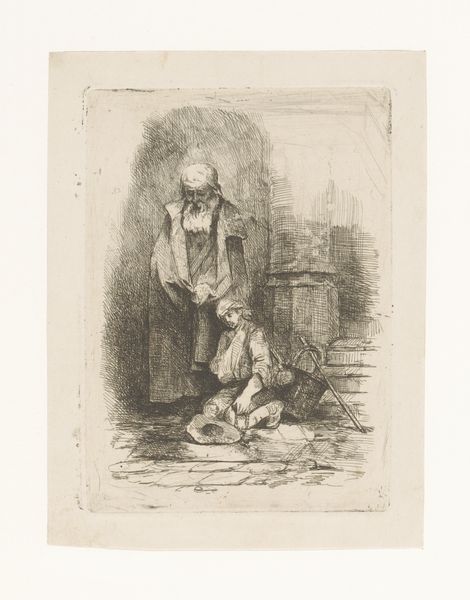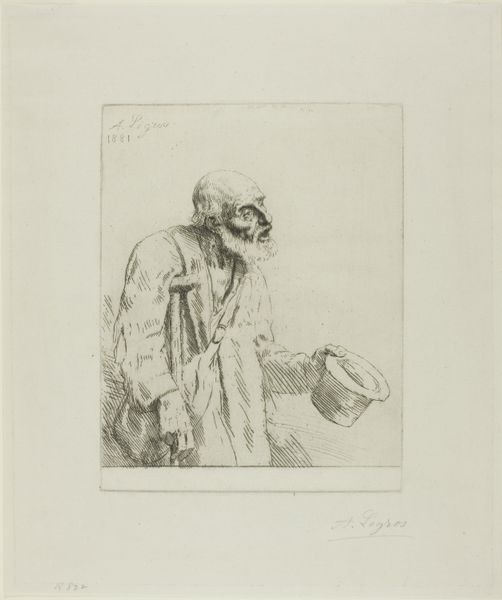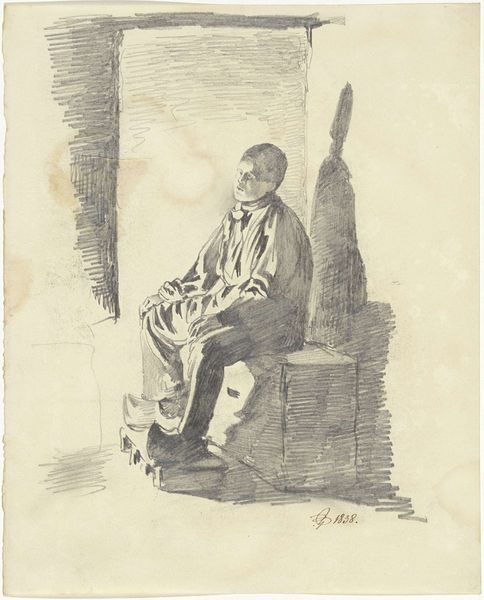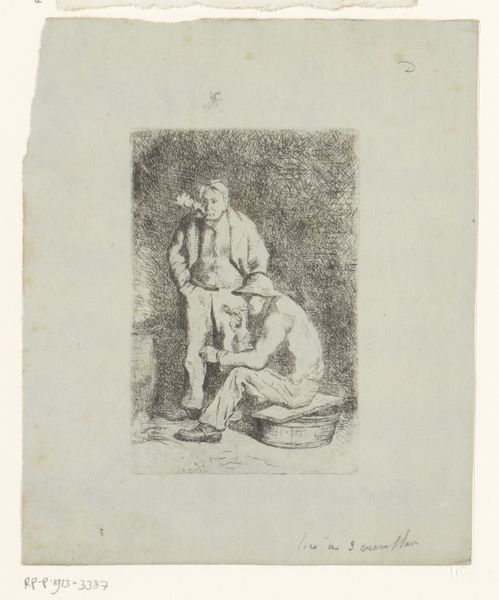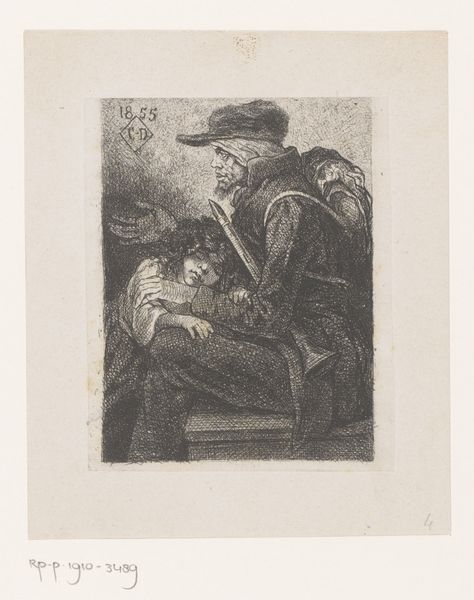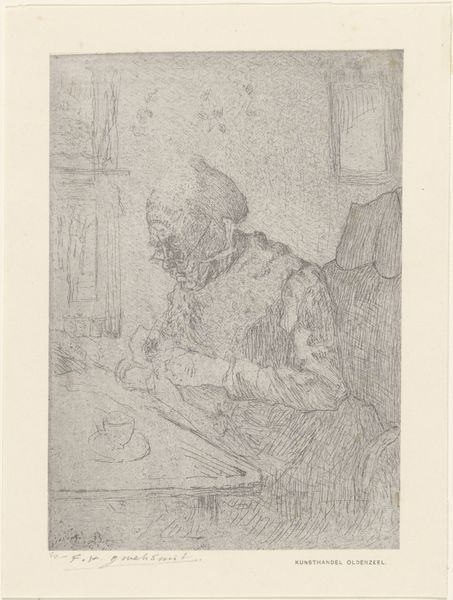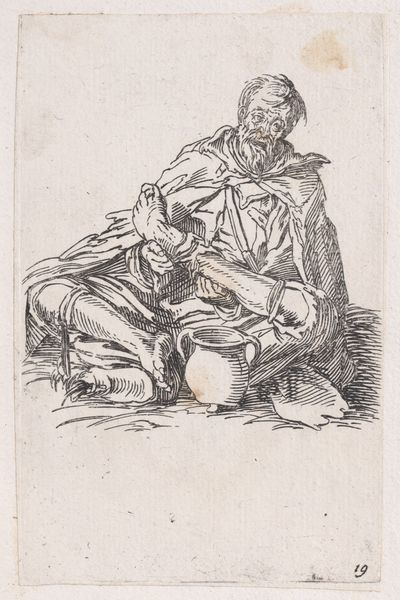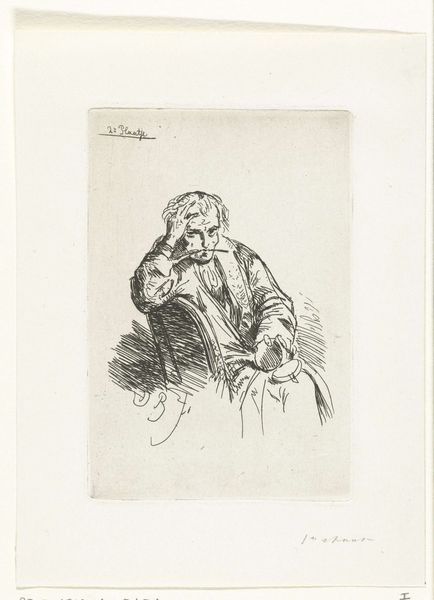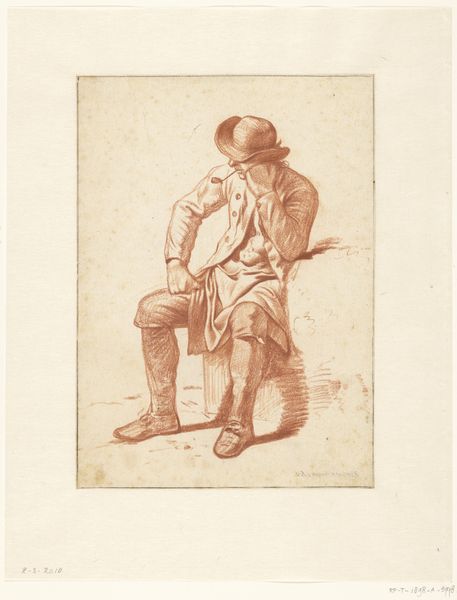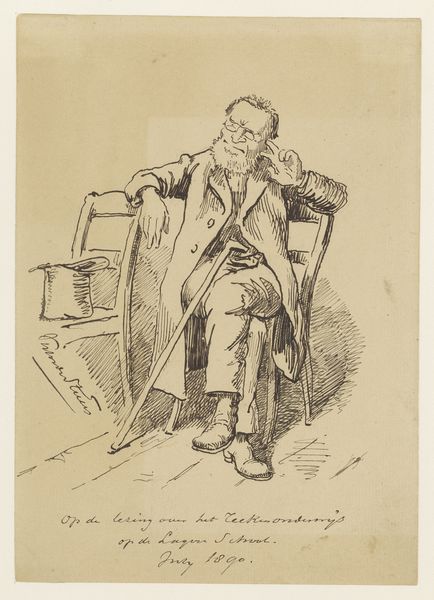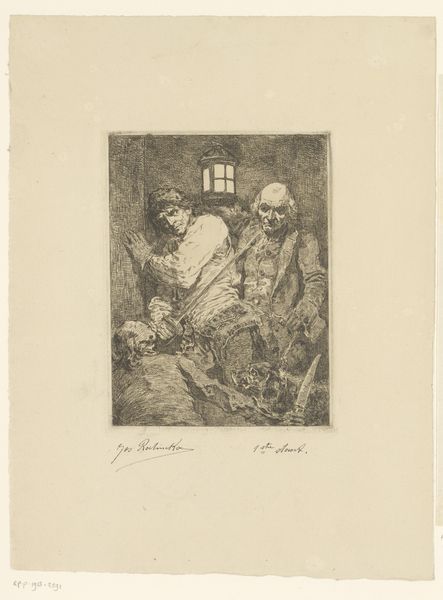
print, etching
#
portrait
# print
#
etching
#
old engraving style
#
personal sketchbook
#
sketchbook drawing
#
genre-painting
#
realism
Dimensions: height 218 mm, width 147 mm
Copyright: Rijks Museum: Open Domain
Editor: Here we have Jos Ratinckx's "Oude man gezeten op een kruk met pan en vork," or "Old man seated on a stool with pan and fork," an etching from 1888. I find the detail in this portrait striking; the artist really captured a weariness in the man's posture. What strikes you most about this image? Curator: Well, immediately I see the intersection of realism and genre-painting. It begs the question: Who was this man? Was he a specific person that Ratinckx encountered and sought to depict with accuracy? Or, did this figure represent a broader segment of society that Ratinckx was hoping to portray for the public? Editor: That's interesting, I hadn't thought about the "public" aspect of this kind of artwork. Curator: Consider the medium - an etching, reproduced and distributed. And the date – 1888. Think about the burgeoning social awareness of the period, movements towards labor rights, increased urban poverty… How might this image participate in a conversation around these topics? What do the pan and fork tell us? Editor: I guess it implies a sort of humble, working-class existence. The pitcher on the floor supports that reading too, maybe he's about to eat or has just finished. It makes you think about daily life. Curator: Exactly. Now, how might a genre-painting like this influence public opinion? Or reflect the social consciousness of its time? Does it idealize the man, or does it aim to represent the grim realities of poverty? And how does Ratinckx position himself as an artist in relation to his subject? Editor: I hadn't considered how an image like this might shape someone's perspective of working-class people during that time. I suppose it invites a certain level of social critique. Curator: Precisely. Thinking about this piece within the context of art as a social commentary certainly enriches my understanding of it. Editor: Mine too. Seeing it as a form of social discourse rather than just a portrait adds a whole new dimension to its impact.
Comments
No comments
Be the first to comment and join the conversation on the ultimate creative platform.
